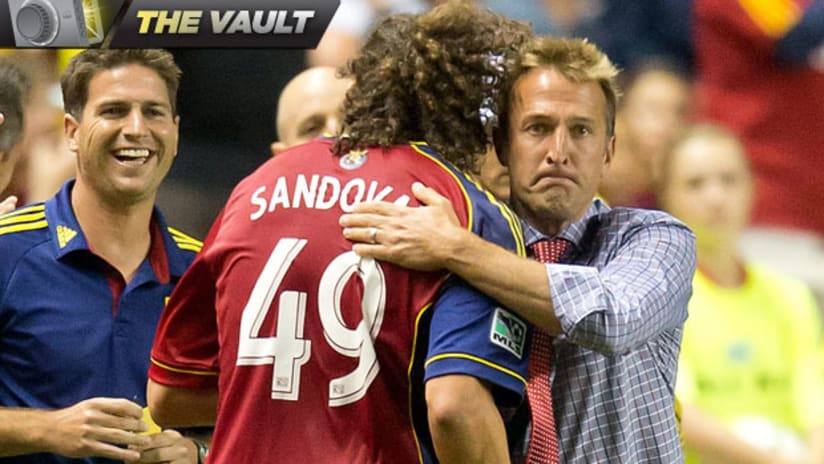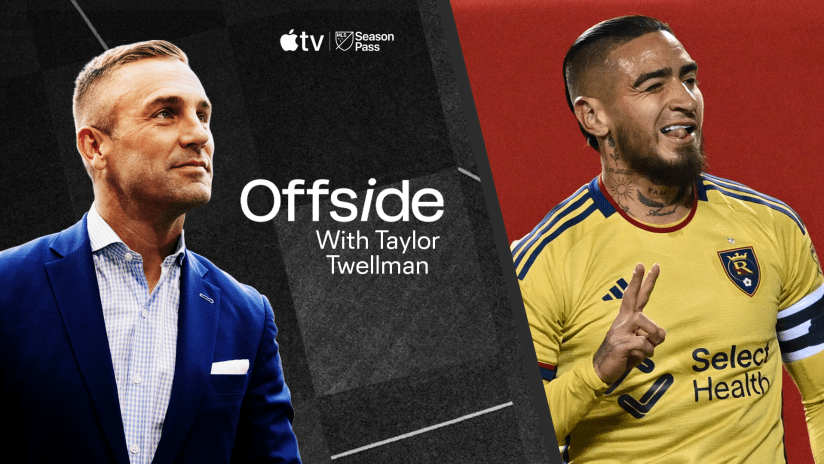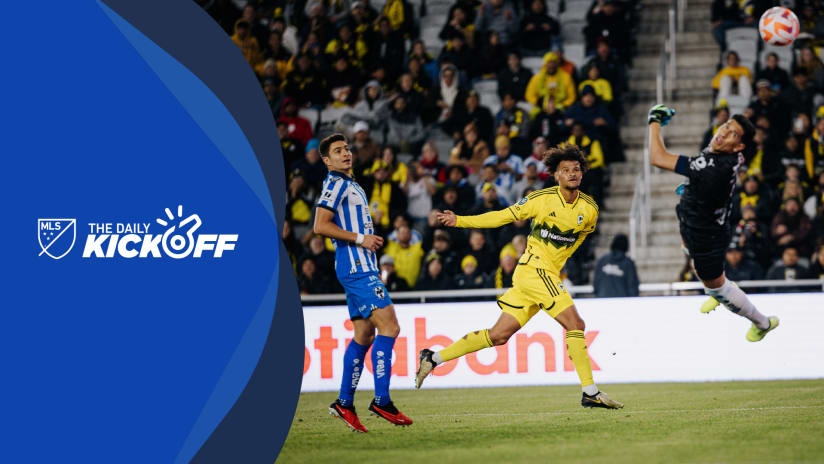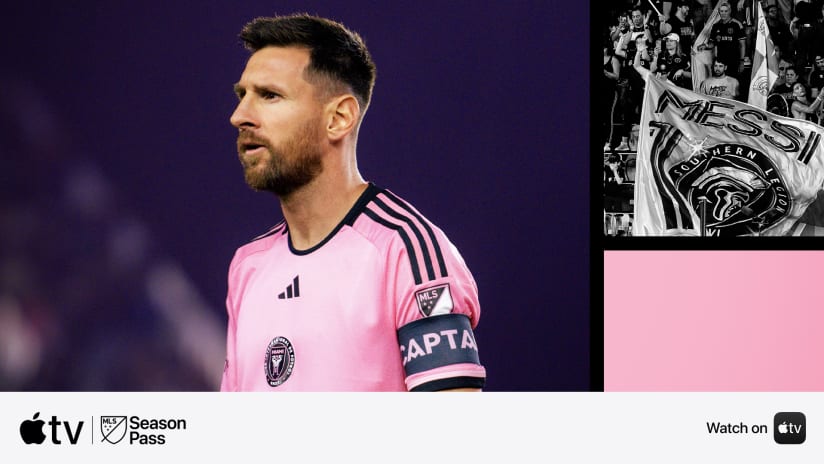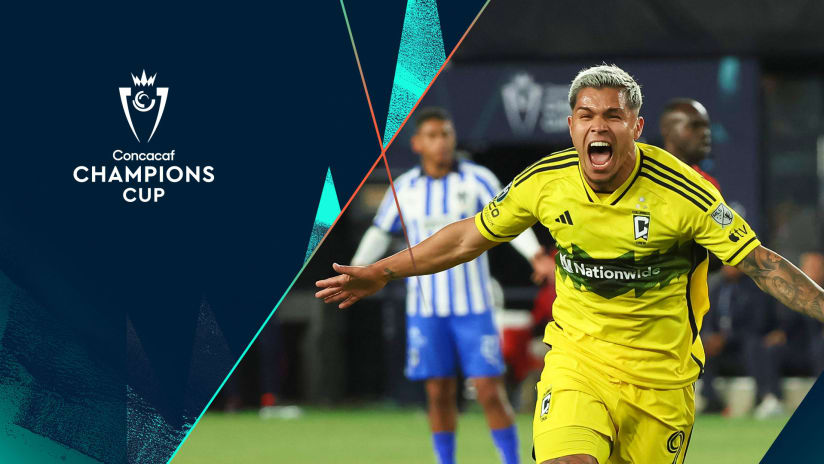With the MLS Cup final in Kansas City just days away, MLSsoccer.com is offering up a glimpse into the vault of previous longform articles on the site that examine the biggest names and best storylines heading into this year's matchup between Sporting Kansas City and Real Salt Lake.
Here's a look at an entry into site's "The Word" series earlier this year from Armchair Analyst Matthew Doyle, who looked back at Real Salt Lake's loss in the 2011 CONCACAF Champions League final and how it's shaped their team ever since. This article originally ran on June 21, 2013.
SANDY, Utah — It was one of those nights that leave fans frustrated, coaches speechless and strikers staring distantly, blankly at something on the horizon. Expectation turns to anger turns to despair, as chance after chance gets batted away by a locked-in goalkeeper, or pings helplessly off the post.
That’s what Real Salt Lake went through last October 23, in their home stadium, on national TV, and against a Herediano team that, honestly, wasn’t good enough to beat them.
But on that night, they didn’t need to.
“We were by far the best team in that group,” RSL vice president and general manager Garth Lagerwey says now. “It was one of the most difficult results since I’ve been here, if not the most difficult.”
RSL took 18 shots, and put eight of them on goal. They held nearly 70 percent of the possession on the game, much of it in and around the 18-yard box as they probed for that one, perfect opening.
They found it early, but Fabián Espíndola fired over despite having an empty net in front of him. Later, Nat Borchers had a goal ruled out for a phantom foul on Chris Schuler. And before, during and after, Leonel Moreira was able to stop everything else that the Claret-and-Cobalt threw at them.
The tiny Costa Rican side held onto a scoreless draw, and in so doing advanced to the CCL quarterfinals. RSL, the franchise that puts more stock in the tournament than any other in Major League Soccer, went nowhere.
Sometime in the next five years, the CONCACAF Champions League will mean more to MLS fans than it does right now. The stadiums will be full, the TV profile will be higher, and the atmosphere of those continental nights will send a thrill of excitement up the average fan’s spine.
But here’s the deal. It already means that much to Lagerwey. And to head coach Jason Kreis. And to the veterans on the RSL team that had come so agonizingly close to winning the whole damn thing back in April 2011.
So even though Kreis says he doesn’t dwell on individual losses too long, or let them unduly influence his decision-making process, he knew the match was a harbinger of sorts for what was to come. The end of an era was looming.
“For a while, we needed things to change – whether that was tactically, or players, or something else,” he says now. “We needed a breath of fresh air.”
*
Lagerwey likes to play the small-market card, and he’s done it for years. Against any number of odds he’s helped build RSL into perhaps the most consistent team in MLS – they’ve made the playoffs every season since 2008, the longest streak in the league – but the success always seem dwarfed by the free-spending ways of the LA Galaxy and Seattle Sounders.
RSL have the 2009 MLS Cup trophy, which they serendipitously won in Seattle against LA. The Sounders, though their postseason struggles are well-documented, have three US Open Cups. The Galaxy have two MLS Cups and two Supporters’ Shields. Each one of those is another spot spoken for in the trophy cabinet, and another entrance into the CCL.
A team with such eager ambitions shouldn’t be expected to trade All-Stars to try and keep pace. But that’s exactly what RSL did this offseason, sending Will Johnson to the Portland Timbers, and Jámison Olave and Espíndola to the New York Red Bulls in a one-day remodeling that left RSL players in shock.
“To be honest, it seemed like … at first, it seemed like it was kind of devastating to the team,” says midfielder Sebastian Velasquez. “Obviously there was a great relationship between these guys because they’ve competed in so many big tournaments, they’ve won championships together, they’ve lost finals together. It’s kind of like breaking up a family.”
Nat Borchers, the veteran defender who partnered with Olave to form one of the most feared defensive units in the league from 2008-12, agrees.
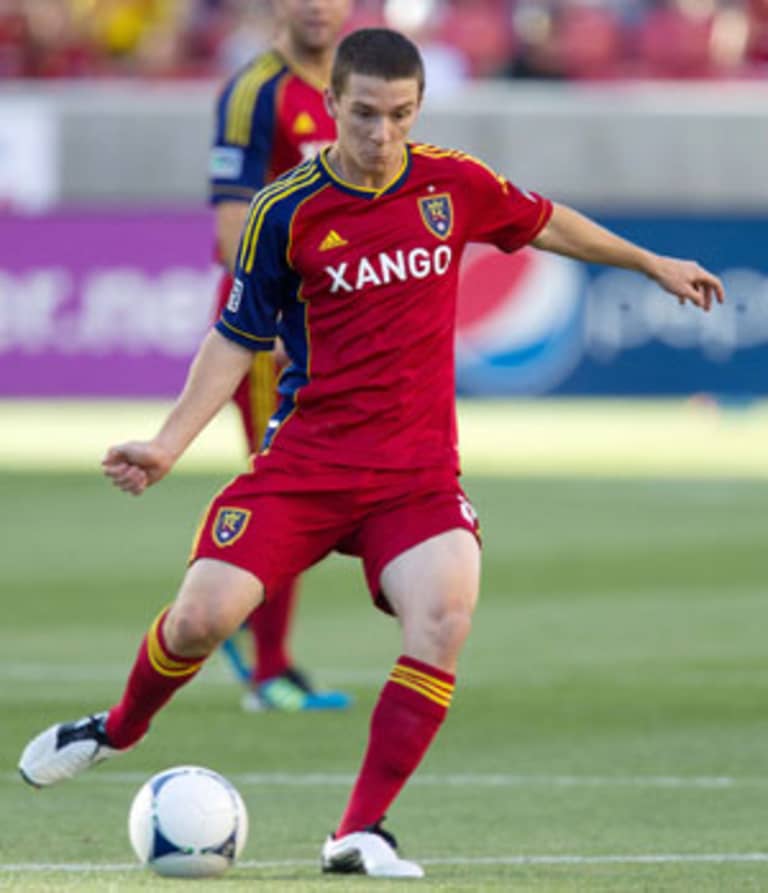
Will Johnson spent five seasons with Real Salt Lake before he was traded to Portland last December. His trade was one of a number of moves that led to contentious meetings among RSL coaches and other members of the technical staff. (USA TODAY Sports.)
“It was really tough, to be honest. More from a personal standpoint than from a team standpoint,” he says. “You know, I developed a really strong relationship with all those guys.”
And then, after a pause: “There were some question marks as to how the team would turn out after that.”
Lagerwey felt the same, and felt it acutely.
“I hope this isn’t going to be the typical offseason, trading three All-Stars. If it is, it’s going to shorten my life,” he says with a sardonic twist. “Will Johnson, maybe more than anybody, exemplifies what we’re all about as a club, and he’s the captain for Portland. Fabián was the ultimate good soldier. And Jámison – how was he never called up [to the Colombian national team]?”
Still, there were some realities that the RSL braintrust had to face if they wanted to stay competitive with the big spenders, continue their playoff streak and make their way back to the CCL.
First, they’d always had trouble with speed, most notably in the 2010 Western Conference semifinals against FC Dallas. They simply needed to get faster, and be able to not only deal with athletic opposition, but also put the fear of God into teams with some speed of their own.
And second, they needed depth. They needed a way to turn three contributors into five, or six or seven. The schedule has grown, the Open Cup is more and more important, and injuries, as always, inevitably take a toll every summer.
Most importantly, though, was this: Kreis wanted to teach what he knew best. He specifically told Lagerwey that he wanted to mold some young strikers, which he hadn’t really had a chance to do since 2009, when he helped shape Robbie Findley and Yura Movsisyan into a front line that won the team the MLS Cup.
“We’ve got one of the best strikers all-time in the league, and certainly the best striker coaching a team,” Lagerwey says. “So when he says that you say, ‘OK, we’ve gotta figure out how to do this.'”
ANALYST: Mining for the perfect midfield diamond
As for the rest? Scouting, good fortune and a calculated risk. The RSL decision-makers had to move a chunk of money to free up salary cap space – Lagerwey put the amount at seven figures – and there were two ways to do it. They could move out guys like Johnson, Olave and Espíndola and leave a very specific void, or try and move a larger number of players from the periphery of the team.
“We felt like we would be able to keep the core – a portion of the core – if we were willing to part with some important pieces,” Lagerwey says.
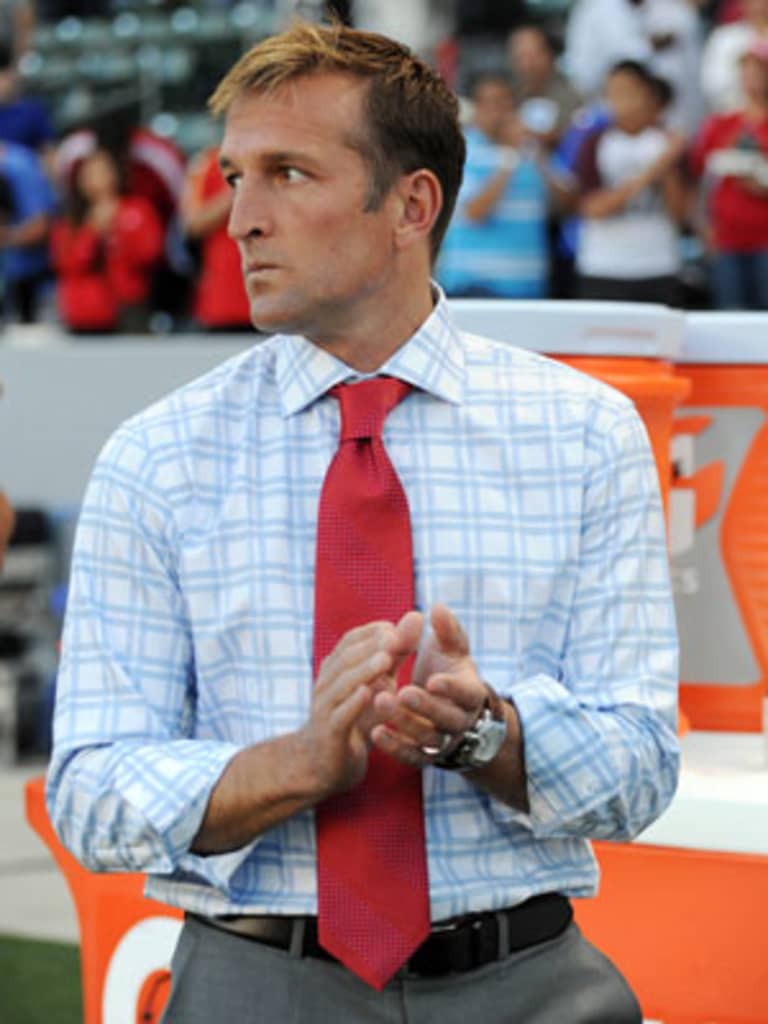
Part of the reason behind RSL's big offseason moves was the desire from head coach Jason Kreis to help mold a young forward into a high-level talent, something he felt he hadn't done since the team won the MLS Cup in 2009. (USA TODAY Sports.)
It wasn’t quite that easy, though.
“We didn’t have to change five or six players, but we changed three guys that are all-star caliber players, first-choice players when they’re healthy and available,” Kreis says. “So it wasn’t like it was an insignificant change.”
It was, instead, a change that provoked several tense meetings between Kreis, Lagerwey and the entire technical and coaching staffs.
“They are extremely long meetings, they are extremely emotional meetings, they are extremely ugly meetings, because we literally will get in very vehement arguments,” Kreis says.
“But at the end of the day we have gotten very good at walking out of those meetings and saying, ‘Hey, the decision has been taken and we’re all gonna support the decision.’ Whether or not it was my decision and [the staff] agreed with it, or [Lagerwey’s idea] that was pushing forward and I didn’t agree with it, but at the end of it all we’re very much together with the decision, and I support it.”
Confident as they were in the changes, though, it still stung to trade such key veterans, and it was undoubtedly a risk to move forward with so many kids. Two or three? Absolutely. But now a third of RSL’s contributors this season are now 22 years old or less, a clear indication that it’s a different blueprint at play for the future at RSL.
But as it turns out, that was the point.
*
It’s mid-June, and RSL are flying. Since the beginning of May they’ve won seven of nine in all competitions, and have scored 25 goals in that span. This team looks vastly different than the one that not only failed to score vs. Herediano, but proceeded to get blanked four more times down the stretch to put a bow on what turned out to be another season without a title.
“I haven’t held a trophy for a long time,” says Javier Morales, the Argentine No. 10 who, perhaps more than anybody else, embodies how RSL want to play the game. “It’s been since 2009, and I only have a couple of years left. But now it’s good.”
Morales, who has at last fully recovered from that horrific ankle injury suffered in May 2011, is still at the heart of the RSL attack, and many of the names around him are familiar. Kyle Beckerman as always runs the show from defensive midfield, and Ned Grabavoy, a key figure in the 2009 MLS Cup heroics, is having the best season of his career on the flanks of the diamond. Álvaro Saborío, meanwhile, is still the first-choice No. 9.
But there are a host of other names, guys who are new to RSL, or new to the league.

Newcomer Olmes Garcia is part of the new breed of players at Real Salt Lake, and has already paid diviends at just 20 years old. Says veteran midfielder Javier Morales: "They are hungry. They have energy." (USA TODAY Sports.)
“They are hungry,” says Morales. “They have energy.”
And they are young. Newcomer Olmes García is tied with Saborío for the team lead on four goals. Garcia is 20, and scored two late goals in a dramatic 3-1 statement game win over the Galaxy two weekends ago.
When Saborío has been sidelined, Devon Sandoval, an unheralded second round draft pick out of New Mexico, has been the target forward. Sandoval has one goal in league play, but three in his last two US Open Cup games. RSL score one goal every 46 minutes when he’s on the field, and when he’s not, it drops to one goal every 80.
Joao Plata is second behind Morales on RSL with four assists. Plata is 21. Velasquez, a second-round pick in 2012 who was even less heralded than Sandoval, is third on the team with three assists.
Homegrown defender Carlos Salcedo has become, at age 19, the starting center back next to Borchers. Another 19-year-old, Luis Gil, has the strongest claim on a spot in the starting XI of any of them, usually lining up on one midfield flank or the other when he’s not off captaining the US U-20s.
Morales is 33, Borchers is 32, Beckerman, Saborío and Chris Wingert are 31, and Grabavoy is 30. Their window of opportunity is closing.
“If I’m still playing in three or four years, man, I would be so happy,” says Borchers.
Kreis and Lagerwey had been fixing some short-term problems while maintaining their long-term goal: To build a generation of players who can take the baton from Morales, Borchers, Beckerman, Nick Rimando and the rest two, three or four years from now. Or gradually at any point within that span.
“It’s, ‘Can the young kids become, at worst the middle class, best case the elite, the new core?’” Lagerwey wonders.
The kids, for their part, have bought into the culture. Sandoval says it’s crazy that the veterans have taken such an interest in grooming him, and the rest of the youngsters, for leadership roles.
“But then again, that’s the responsibility I want,” Sandoval continues. “And when my turn comes, hopefully a long time from now, I’ll do the same thing for the next generation. I think that’s what RSL is.”
Velasquez picks up the thread.
“We obviously have amazing players on our team, but our amazing players care more about the team than they do about themselves,” he says, carefully choosing his words. “I think that says a lot about them, and I think us as young guys coming in, we want to fight for the veterans, and the veterans want to fight for us.
“It makes us a family.”
Two generations of one, actually. Kreis admits that there’s much more work to be done, but insists the big question now isn’t culture. Not anymore.
“We have some players, some very young players that are extremely cohesive,” Kreis says. “The camaraderie among some of the young players is fantastic. And so the only question will be ‘Will they be good enough pros to be very, very good players in our league for a long time?’
“If that question is answered in the affirmative then I think for sure they have the mentality, the mindset, the hunger and the cohesiveness to be the core of this team going forward.”
Forward, and not backward. As RSL surge further into a new era, the Herediano game and the barren weeks that followed get shoved deeper into the past, a seminal stretch when things shifted at RSL, and the club left the struggles in the rearview, right where they belong.
“We are a family,” Velasquez says. “And I don’t want my family to have to feel like that again.”

